A Passage to Africa is currently taught on the Edexcel GCSE/IGCSE English Language Paper 1 curriculum. It is one of the 10 non-fiction texts which students answer on in Section A. This is a guide to how to teach this text based on my A Passage to Africa GCSE resources pack.
George Alagiah is often recognised by students, especially British students, and this insightful and visceral text often draws strong reactions from students, whether that is sympathy, disgust or horror. However they are left feeling, it has an impact and is a great one to teach, if not a little bleak!
It’s graphic and visceral, written with raw honesty and a certain disdain for journalists; but how can we support students to capture that in their exam essays? How can we break it down to consider not only the message from a critical stance, but how Levine conveys the exciting yet hazardous atmosphere of the donkey race through multiple language and structural techniques?
Teaching Ideas for A Passage to Africa Edexcel GCSE/IGCSE
I’ve created a resource for busy teachers to take you step-by-step through the text. It contains everything from an engaging, thought-provoking starter, to identifying language techniques, to analysing and annotating the text, to practising Edexcel GCSE style questions on the text, including the Question 4 12-marker and a comparison to another GCSE text, A Passage to Africa. This resource contains editable Google slides, quizzes with answer keys, comprehension questions, exam questions, techniques and model exam answers and close textual annotations of the whole text. All activities are ready to download and print in PDF form or there are links for you to personalise them if you wish.
Edexcel IGCSE English Language Paper 1 Exam Structure
The 2 hour 15 minutes Edexcel IGCSE English Language Exam is split into Section A and Section B. Section A is the reading assessment and candidates are presented with one of the 10 Anthology non-fiction texts and one thematically linked unseen text. They have 5 questions to answer in Section A:
- A 2 -mark retrieval question. Lifting and copying two brief and relevant quotes from the unseen text is the skill being assessed in this question.
- A 4-mark summary question. Candidates are asked to paraphrase a certain event, character or theme from the unseen text.
- A 5-mark ‘SQUID’ question (it’s an acronym not a slimy sea creature!). Students identify five distinct details from the unseen text and use quotations to support their points.
- A 12-mark extended analytical response on the seen text.
- A 22-mark comparative essay, usually based on the writers’ perspectives, experiences or feelings.
Section B is a writing assessment. Candidates choose between two options, which are normally loosely based on the Section A texts. The text types include a letter, article, speech or leaflet. Both Section A and Section B are equally weighted, worth 45 marks each.
A Passage to Africa PDF GCSE Resources
To pique students’ interest and gage their opinions, I first ask them to discuss war journalists – what they think the job entails and the potential challenges. I then ask them to consider the literal and figurative connotations of the title, especially the word ‘passage’.
To introduce them to George Alagiah and what he reported on, I show them a brief BBC clip of him reporting from Somalia from 2011 and ask them to write notes based on thought-provoking questions which are relevant to the study of A Passage to Africa. The questions and slides for teaching this introduction to the GCSE extract A Passage to Africa is all available in the resource.
A Passage to Africa GCSE Extract Language and Structure Techniques
Before diving into the text, I quickly review key language techniques in the extract so that they are fresh in students’ minds as they read. Included in this resource is a matching activity – definition and technique name, which students can either copy, cut and paste or simply number. As an extension, students can write their own examples of the techniques. This is also a useful revision tool for A Passage to Africa.
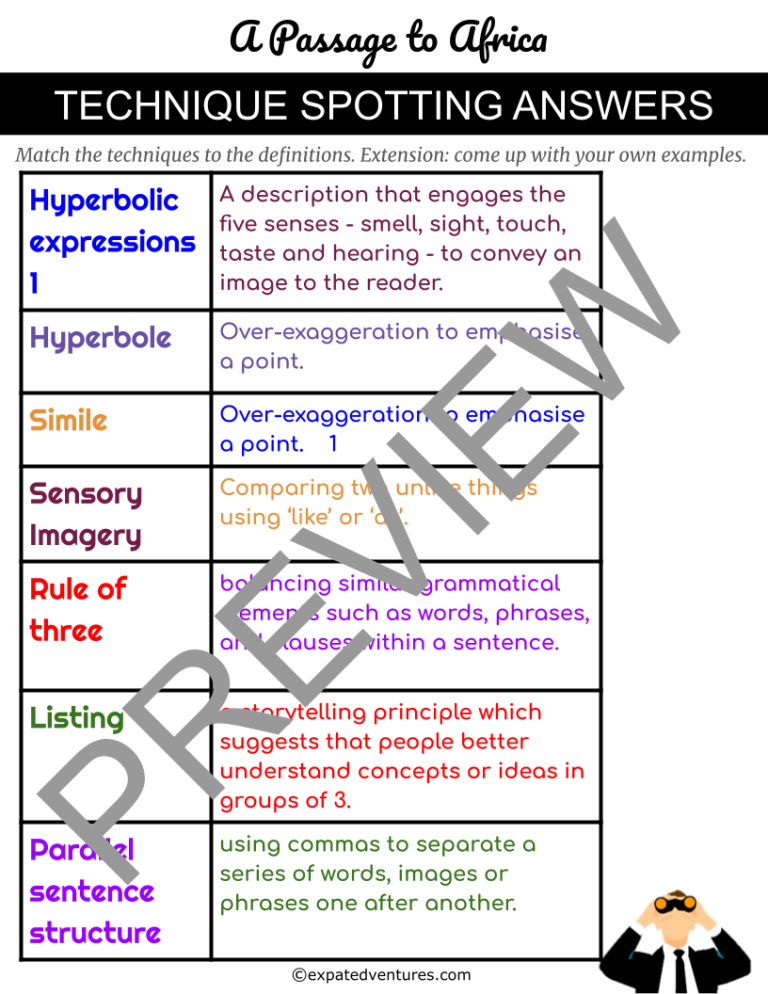
A Passage to Africa GCSE Resource Annotations
Before close textual analysis, I often ask students to do an initial reading with 2 different coloured highlighters. They highlight language which depicts the graphic, revolting reaction in one colour and the apathetic, dismissive tone in another. It is a fairly straightforward extract for students to understand on a surface level – a foreign correspondent reporting his encounters with various victims of war in Somalia. The more challenging skill comes in unpacking how and why Alagiah is disgusted, feels so negatively about journalists and is so impacted by the anonymous smiling man.
When it comes to closely analysing the text of the extract, there are a few ways of approaching the activity. You can read and annotate together with students completing the annotations in real time. Alternatively, you can split students into groups and ask each group to focus on a certain paragraph before feeding back to the class. Or you could read and discuss, then ask students to complete the annotations for homework.
There are many ways of approaching close textual analysis; I find that varying the method for different texts keeps students interested through the unit. Detailed annotations of language and structural techniques are included in this A Passage to Africa GCSE/IGCSE lessons and activities.
A Passage to Africa IGCSE Activities
For this text, I model how to closely annotate the first section of the text, then split the class into small groups and give them a section each to analyse. Questions for each group have been included in the resource. To share the annotations, you can either have students present to the class or conduct some variation of jigsaw activity in which each group nominates 1 or 2 students to rotate and ‘teach’ the other groups about their section. When they return to their ‘home’ group, the students who remained and were ‘taught’ now ‘teach’ the students who rotated about the sections they missed.
This enables much peer interaction and opportunities for information to become embedded, plus limits boredom from repeated annotation lessons. If you are concerned that students will miss crucial information in peer discussion and annotation, you could give them teacher notes and ask them to ‘fill in the gaps’ for homework.
A Passage to Africa GCSE Questions with Answer Key
After analysing the text, I do a quick AFL multiple choice quiz with students to assess their understanding of the language and structure of the text, then introduce exam practice questions. Quiz questions and answers are available with this resource. This can be done as a whole class activity on the interactive whiteboard or handed out to students to do in pairs or individually, depending on your time and the nature of your class.
Questions 1, 2 and 3 on the Edexcel IGCSE English Language Paper 1 exam test students’ understanding of the unseen text, whereas question 4 assesses analysis and evaluation of the previously studied text. When you teach the 10 non-fiction texts, it’s useful to focus on one or two of the questions per text. That way, you can teach the structure, rubric and help students to plan and write quality responses. You have time for self and peer assessment as well as model answers. Over the span of studying all 10 texts, students will cover all question types from the language exam.
A Passage to Africa GCSE Question 4 Resources
For A Passage to Africa, there is a prompt in the style of the 12-mark question 4 from the Language Exam Paper 1 Section A included with the resources. Firstly, take students through the rubric so that they familiarise themselves with how the response is awarded. Then, you can take students through the example PETER paragraph (point, evidence, technique, explain, refer) and provide prompts so that they can organise their ideas before they attempt to answer the extended essay. This way, there are scaffolds in place to support students to produce high quality responses.
After the class has written the answer under timed conditions, ask them to self or peer assess their responses against the rubric. You may want to mark their work too. Offer them a full mark model answer (included with the activities) to demonstrate how the marks are awarded for this question type. Ensure multiple relevant quotations support a range of clear points, subject terminology is identified and discussed, and arguments are developed. Allowing students to see a full-mark answer in comparison to their work can help them identify what they need to do to close the gap between where they are and a full-mark answer.
A Passage to Africa Question 5 Resources
For this text, I also introduce students to Question 5 on the English Language Paper 1 – the 22-mark comparative essay. In the exam, students compare the studied set text to an unseen text, which is usually thematically linked to the text studied in class. If you are teaching all 10 texts and have a limited time, you can ask students to compare to one of the set texts before you study it in detail. I find that A Game of Polo with a Headless Goat compares well with A Passage to Africa. Both are travel pieces but have contrasting tones and subject matter.
I first give students the question of focus, but before asking them to answer it, I go through the rubric. You could ask students to highlight key words or identify skills required to achieve top marks for this question. Then, ask students to complete a comparison table after simply reading the Game of Polo with a Headless Goat text (not studying it in detail yet to mimic the exam), making notes on similarities and differences between the texts. It’s useful for students to do a brief condensed version of this process in the exam. I have included an editable template with key comparisons in the resource pack.
Once they have done the notes in pairs or independently, take feedback. Students could complete this digitally then combine notes on a shared document or platform if your situation enables digital interaction between students. Now, students have generated ideas to write in their comparative essay, I share an example of how to construct an effective comparative paragraph. As an examiner, I see many superficial and unorganised comparisons, which reduce students’ marks. Teaching a paragraph formula can help students construct cohesive essays.
Edexcel GCSE/IGCSE English Language Paper 1 Question 5 Model Answer
A big part of comparative writing is connecting ideas. I have included a quick connective activity to compile a variety of comparison and contrast connectives so that students have a range of ‘signposts’ for their ideas available to them in their ‘exam toolkits’. When that quick activity is done (answers included in the resource pack), students can actually write their answers. Giving them a framework and collective idea generation enables them to write higher quality answers straight away.
There is also a full-mark response included which I would recommend sharing with students when they have finished their pieces, either to use to peer assess or after you have marked as a model standard. The essay included with this resource is more extensive and detailed than what students would need to produce to be awarded full marks for this task at GCSE level. If you want to share the whole thing with them to give an idea of different ideas that could be included in an answer for this question, that would be just as effective as cutting out certain parts and presenting them with half of it. Either way, the resource is editable and adaptable to what you feel your students are capable of.
Edexcel GCSE/IGCSE English Language Paper 1 Transactional Writing Practice
There are also a couple of creative activities included in this resource. Time-permitting, you could use it as a class activity if you feel that students aren’t connecting with the text, as a homework assignment or an extension activity to challenge students to broaden their perceptions of the text A Passage to Africa. This can help develop skills required for Section B of Paper 1 (Transactional Writing) and Section B of Edexcel English Language Paper 2 (Imaginative Writing).
A Passage to Africa Teaching Resources Edexcel GCSE English Language
To sum up, some of the best techniques for teaching the 10 non-fiction texts include:
- Hook students with an intriguing starter activity
- Use alternative methods to closely analyse and annotate the text
- Quiz students for quick AFL strategy to assess whether they are engaging with the text
- Practise either questions 1-3, question 4 or question 5 from the Language paper
- Study model answers, including examples of typical mistakes students make in the exam responses
- Offer an optional creative activity as homework or an extension to challenge students’ perceptions of the text
Good luck teaching A Passage to Africa – it’s exciting and unusual so interesting to teach in so many ways. Comment below if you can add any useful teaching and learning techniques for this text.

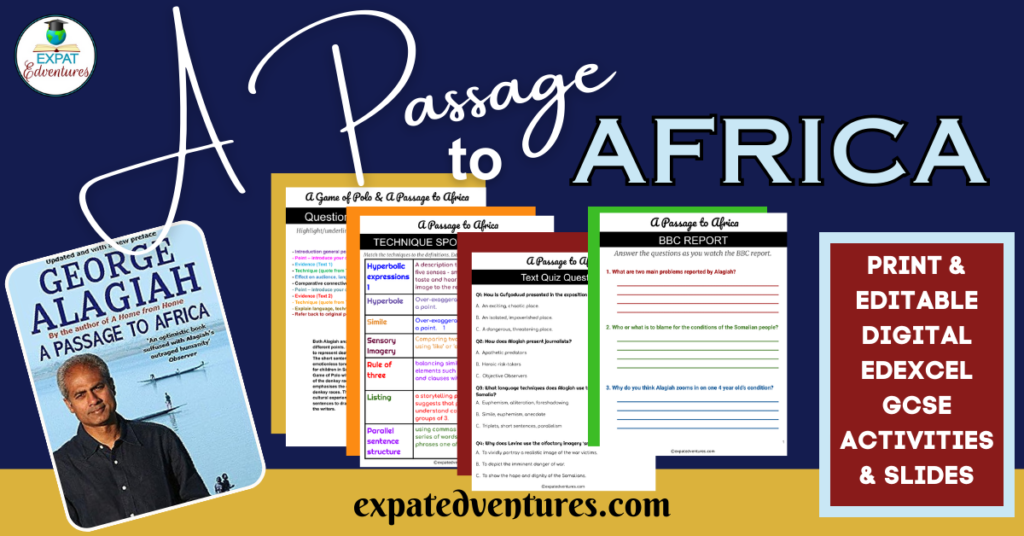
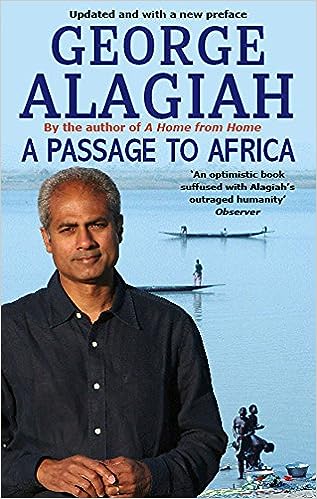
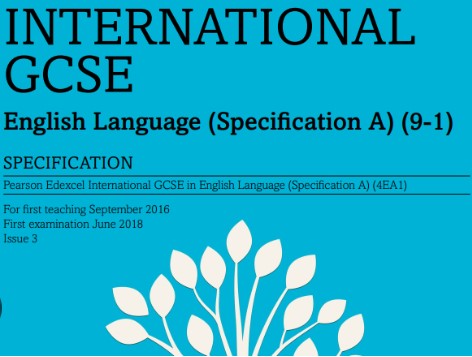

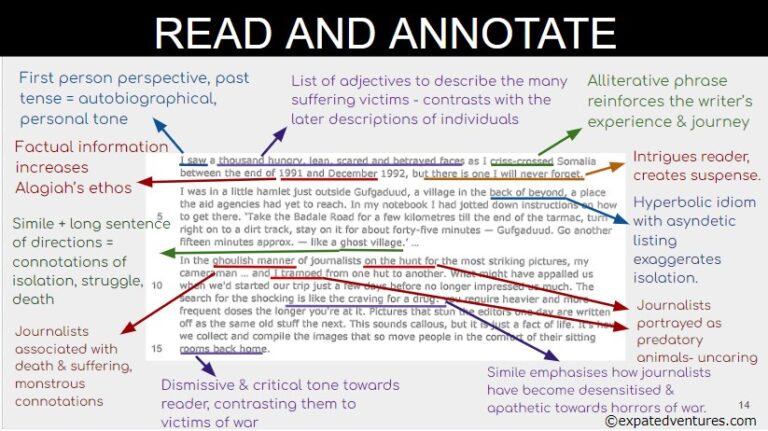
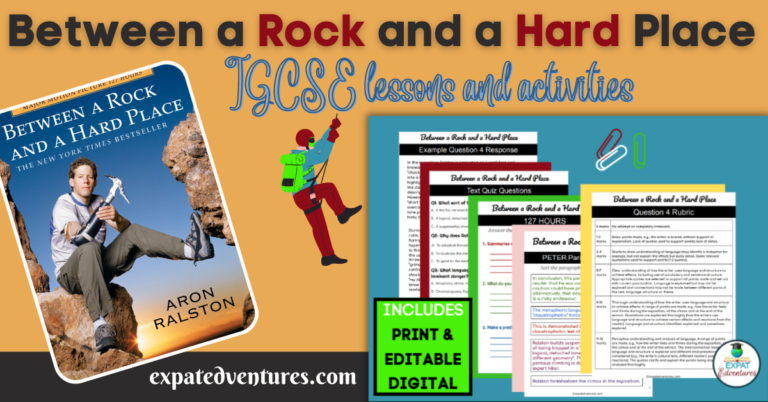
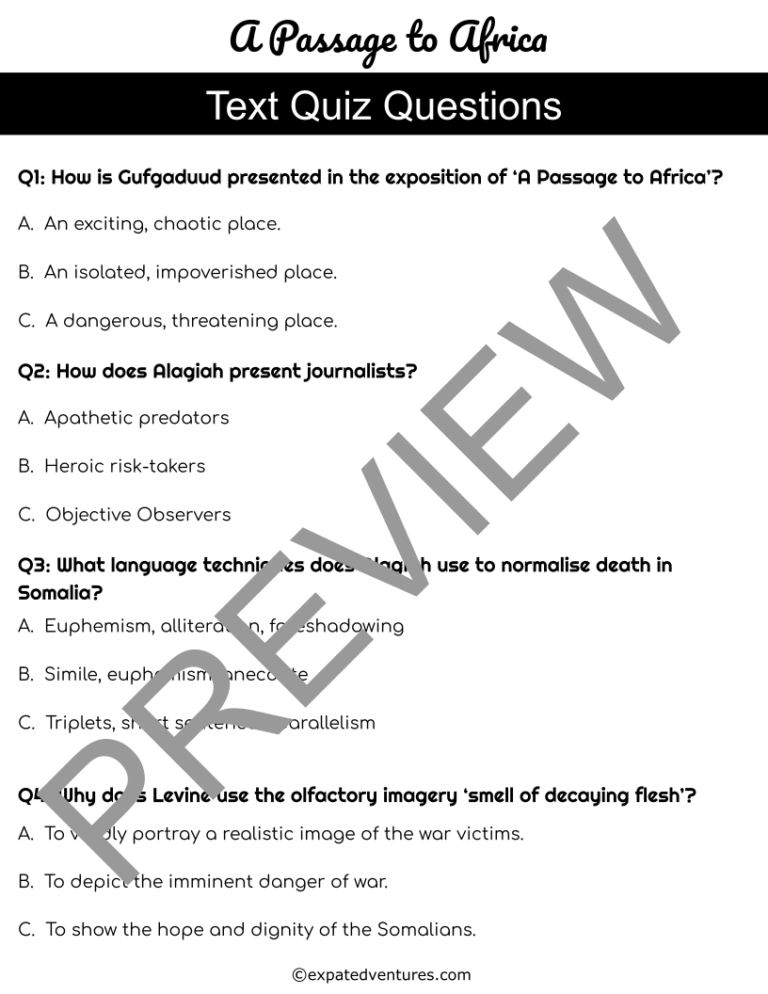
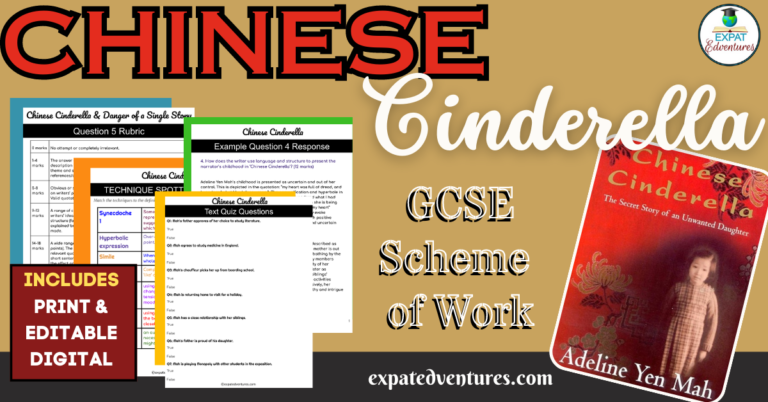
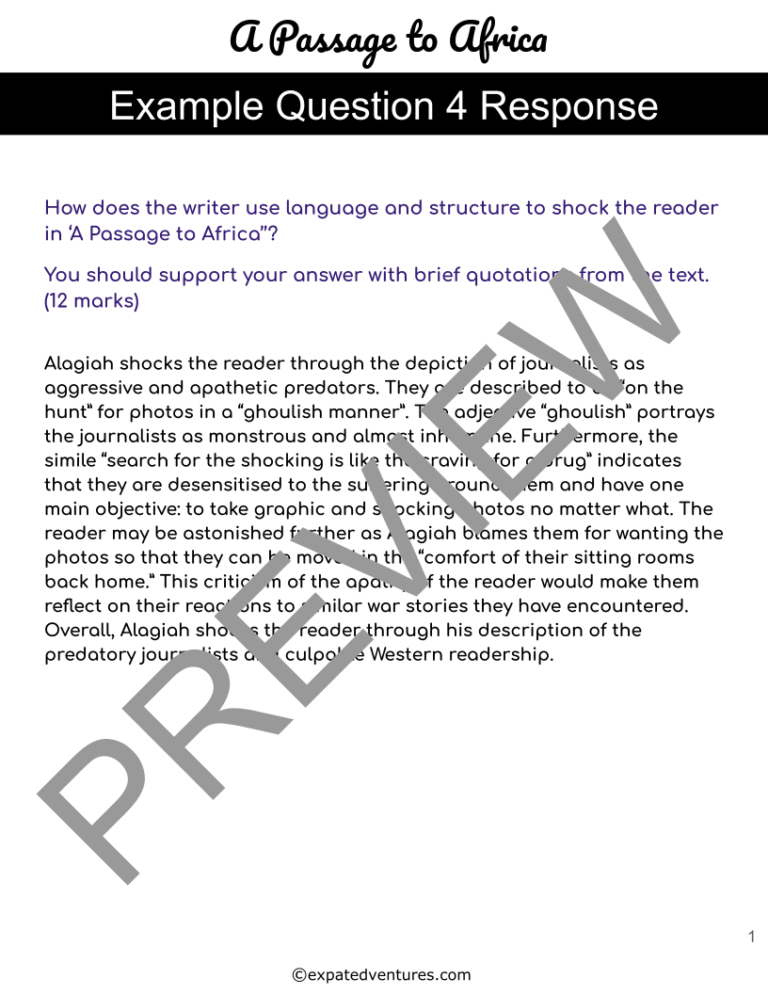
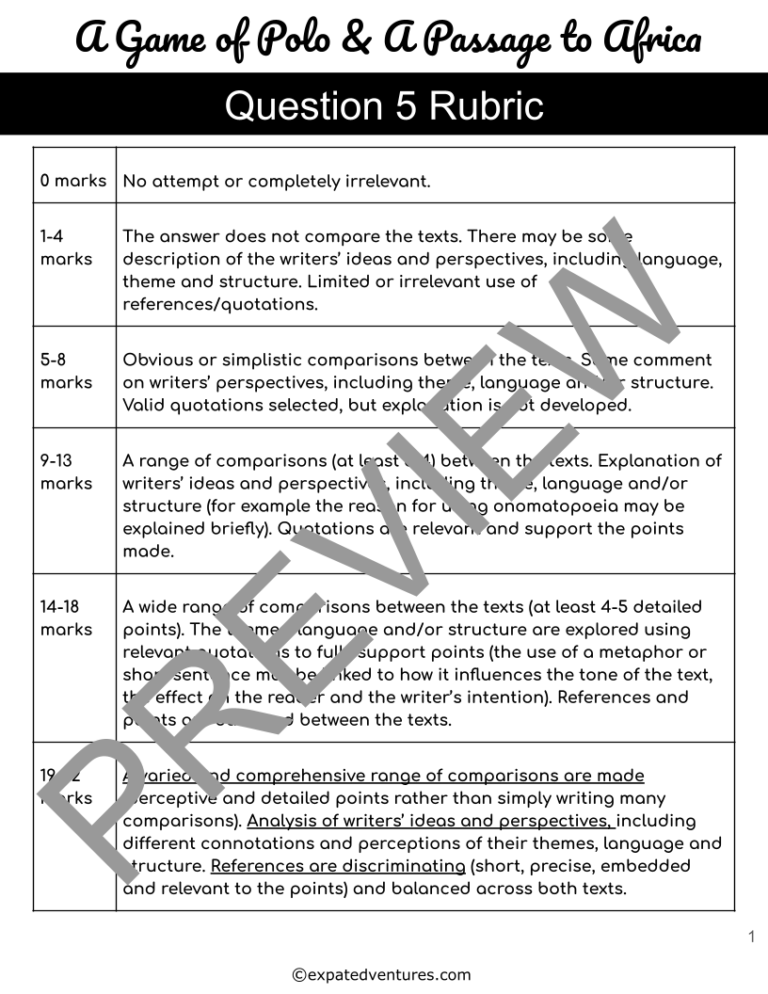
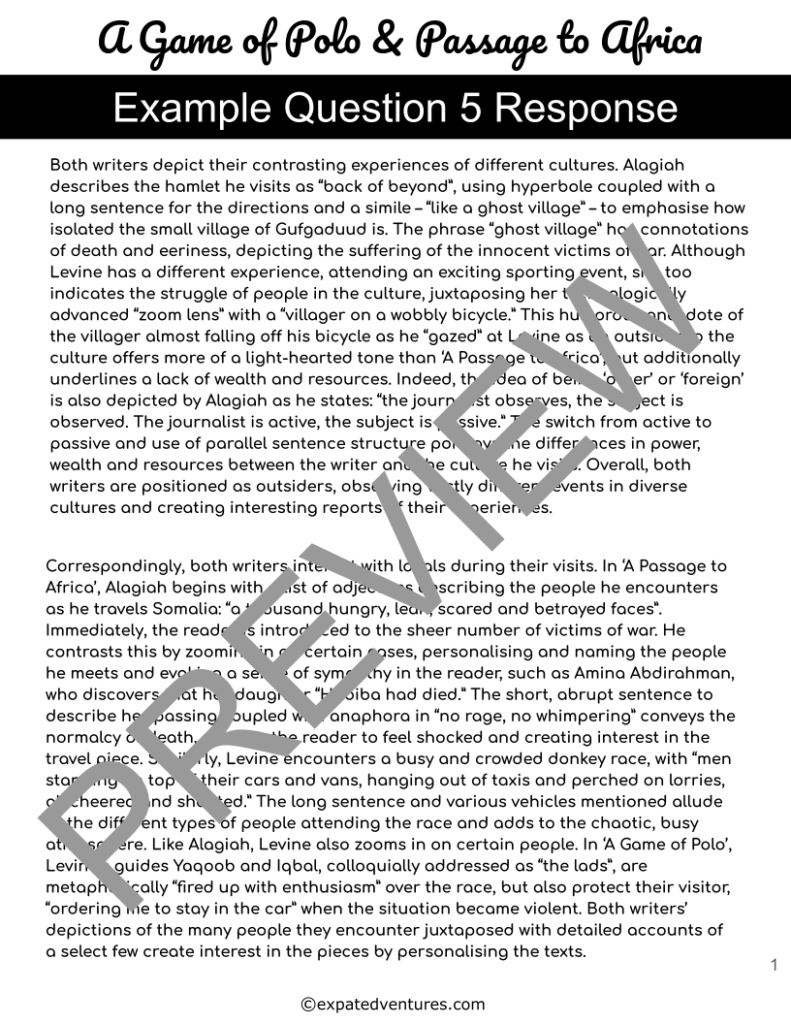
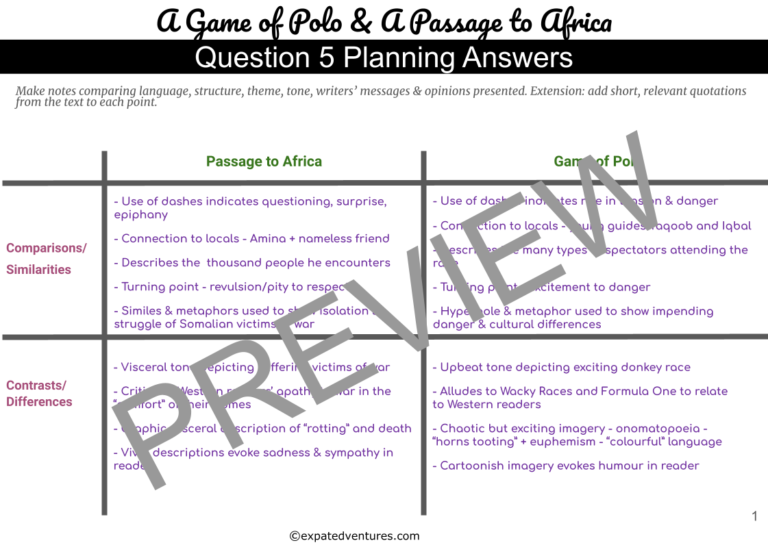
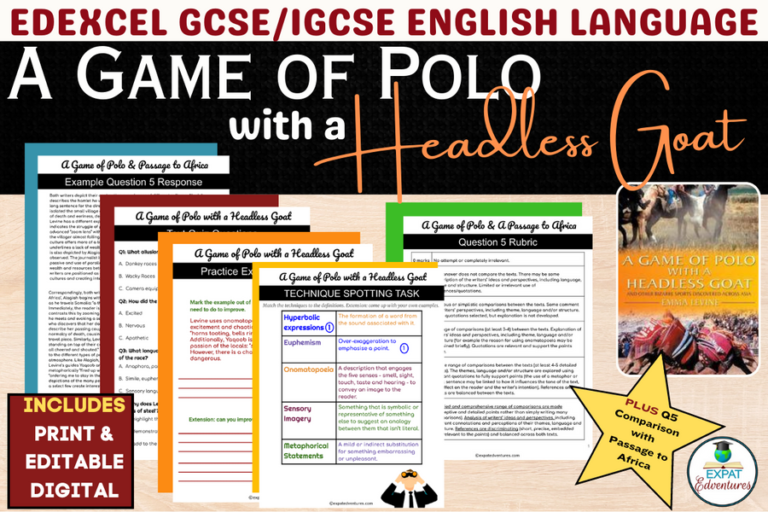
Pingback: Edexcel GCSE English Language Game of Polo with a Headless Goat Resources - Expat Edventures